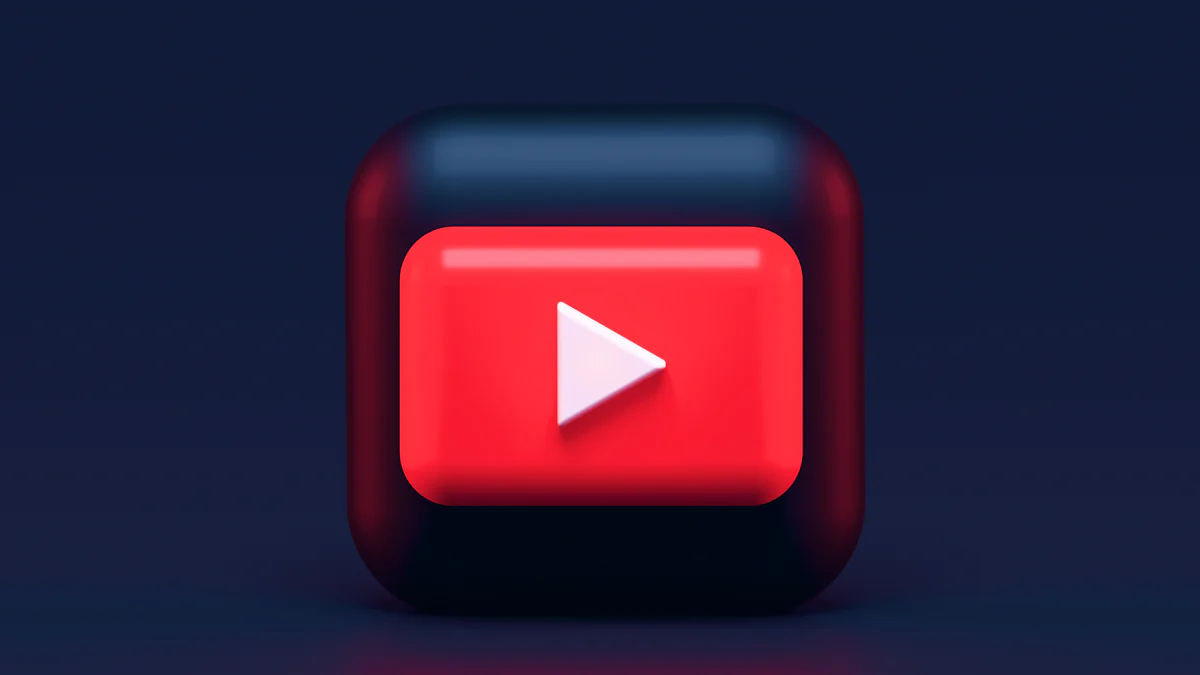Biggest YouTube Influencer Trends Shaping 2025

YouTube influencer marketing has exploded in recent years, and 2025 is no exception. With the global market expected to hit $22.2 billion, brands are doubling down on partnerships with creators to reach their audiences. Did you know 60% of marketers plan to increase their budgets for influencer campaigns? That’s because video content continues to dominate, and creators are finding new ways to connect with viewers. From nano-influencers with tight-knit communities to AI tools transforming content creation, the trends shaping the biggest YouTube influencers are more exciting than ever.
| Statistic | Value |
|---|---|
| Percentage of marketers approaching smaller influencers | 80% |
| Expected global influencer marketing market size by 2025 | $22.2 billion |
| Percentage of B2B brands using influencer marketing in 2023 | 85% |
| Percentage of marketers planning to increase their influencer marketing budget | 60% |
| Expected growth of influencer marketing spending by 2028 | $52 billion |
The shift toward shared values and long-term partnerships is also redefining success. Influencers now prioritize authenticity, while brands focus on deeper relationships instead of one-off deals. These changes are reshaping how you experience content and connect with your favorite creators.
The Role of AI in Influencer Marketing

AI-Generated Influencers and Virtual Creators
The rise of virtual influencers and their impact on the biggest YouTube influencers
Have you noticed how some of your favorite influencers don’t even exist in real life? Virtual creators are taking over YouTube, and they’re changing the game. These AI-generated influencers, like Candy from Prada or Reah Keem from LG, are helping brands connect with younger audiences in fresh, creative ways. They’re not just trendy—they’re cost-effective and always on-brand. For example, Colonel Sanders’ animated persona keeps KFC’s humor alive while engaging millions online.
Virtual influencers are also reshaping how brands approach influencer marketing. They allow companies to experiment with bold ideas without the unpredictability of human creators. But this trend isn’t just about flashy campaigns. It’s about how technology is redefining what it means to be an influencer.
Ethical challenges and audience trust in AI-driven creators
Of course, not everyone’s on board with virtual influencers. You might wonder, “Can I trust an AI influencer?” That’s a valid concern. Many audiences feel disconnected from these digital personalities because they lack the authenticity of human creators. Plus, ethical questions arise—like whether brands should disclose when they’re using AI-driven influencers. As this trend grows, transparency will be key to maintaining trust.
AI Tools for Content Creation
Automating video production and optimization for creators
AI tools are making life easier for YouTube creators. Imagine automating tedious tasks like editing out pauses or adding effects. Tools like AI Video Tools and InVideo do just that, saving hours of production time. Jasper AI even helps with writing scripts or social media posts, so creators can focus on what they do best—making great content.
By 2025, 63% of brands are expected to use AI in influencer marketing, with 55% relying on it for campaign management. This deeper democratization of AI tools means more creators can produce high-quality content without breaking the bank.
Balancing efficiency with authenticity in influencer marketing
But here’s the catch: automation can sometimes make content feel robotic. You’ve probably seen videos that look polished but lack personality. That’s why creators need to strike a balance. AI can handle the heavy lifting, but the heart of the content still has to come from the creator. After all, audiences crave authenticity, not perfection.
Standing Out in a Tech-Driven Landscape
Oversaturation and the need for unique, creative content
With so many influencers using AI, the space is getting crowded. You might feel like every video looks the same. That’s why standing out is more important than ever. Creators who lean into their unique style and voice will thrive in this tech-driven landscape.
Strategies for differentiation in a competitive market
So, how can creators stay ahead? Focus on storytelling. Use AI tools to enhance your content, not replace your creativity. Experiment with formats like behind-the-scenes videos or interactive content to keep your audience engaged. The key is to use technology as a tool, not a crutch.
Authenticity as a Key Influencer Marketing Trend
Transparency in Sponsored Content
Building trust through clear disclosures and genuine partnerships
When it comes to influencer marketing, transparency isn’t just a buzzword—it’s a necessity. You’ve probably noticed how much more you trust creators who openly disclose their partnerships. That’s because honesty builds credibility and fosters loyalty. Brands that prioritize transparency stand out as ethical and relatable. They’re not just selling products; they’re building relationships.
Here’s why it works:
- Transparency creates a credible reputation, which keeps audiences coming back.
- Sharing both successes and challenges makes brands and creators more relatable.
- Open communication encourages feedback and strengthens connections.
For example, when a beauty influencer shares their honest experience with a skincare product, you’re more likely to trust their recommendation. It’s this renewed focus on authenticity and trustworthiness that keeps audiences engaged.
Examples of successful authentic campaigns by creators
Take the case of a fitness creator partnering with a health food brand. Instead of a generic ad, they share their personal journey, showing how the product fits into their daily routine. This kind of influencer content feels genuine and relatable, making you more likely to connect with the message.
The Shift to Unfiltered Content
The growing demand for raw, behind-the-scenes videos
Audiences are craving realness. Polished, picture-perfect videos are taking a backseat to raw, unfiltered content. Behind-the-scenes glimpses and day-in-the-life vlogs are trending because they feel authentic. Brands are catching on, too. They’re leaning into storytelling that feels genuine and relatable.
This shift reflects a broader trend in influencer marketing. People want to see the messy, human side of creators. It’s not about perfection anymore—it’s about connection.
How unpolished content fosters deeper audience connections
When creators share unfiltered moments, it feels like they’re letting you in on a secret. This builds trust and strengthens the bond between you and them. Whether it’s a blooper reel or a candid Q&A, these moments make influencers more approachable. And that’s what keeps you coming back for more.
Long-Term Brand Collaborations
Benefits of consistent partnerships for creators and brands
Long-term brand-influencer collaborations are changing the game. They’re not just about selling products—they’re about building trust and loyalty over time. For creators, these partnerships provide stability and allow them to focus on creating meaningful content. For brands, the benefits are huge:
- Lower costs compared to traditional advertising.
- Higher engagement rates, as seen in campaigns like BBQGuys, which achieved a 5.5% engagement rate—double the industry benchmark.
- Stronger community ties through established influencer recommendations.
Moving beyond one-off sponsorships to build trust
One-off deals can feel transactional. Long-term collaborations, on the other hand, show that a brand truly believes in the creator’s message. For example, a startup beverage company working with health-focused influencers can build a loyal customer base while keeping costs low. These partnerships create a sense of consistency and trust that resonates with audiences.
The Power of Niche and Micro-Influencers
Micro and Nano Influencers in 2025
Why smaller creators are becoming the biggest YouTube influencers in niche markets
The growing popularity of nano and micro-influencers is reshaping influencer marketing. These smaller creators are thriving because they focus on specific niches, making their content more relatable and authentic. Unlike mega influencers, nano and micro creators often have a closer connection with their audiences. This connection builds trust, which is essential in today’s crowded digital space.
You might wonder why brands are turning to these smaller influencers. It’s simple—they deliver results. Nano and micro creators often have higher engagement rates because their followers see them as genuine and approachable. This makes them perfect for niche markets where authenticity matters most.
Higher engagement rates and stronger community ties
Nano and micro-influencers excel at fostering community. Their smaller audience size allows for more personal interactions, like responding to comments or engaging in direct messages. This level of connection creates stronger community ties, which leads to higher engagement. For brands, this means better ROI and more meaningful collaborations.
Building Niche Communities
The value of targeting specific, passionate audiences
Targeting niche communities is one of the smartest strategies in influencer marketing. When you focus on a specific audience, you can tailor your content to meet their exact needs. This approach not only improves marketing efficiency but also builds trust and loyalty.
| Advantage | Explanation |
|---|---|
| More efficient marketing | Knowing an audience’s specific needs allows for streamlined marketing efforts, maximizing resources and driving better ROI. |
| Fosters brand loyalty | Establishing trust is crucial; niche marketing helps build meaningful relationships, as 81% of potential customers need to trust a brand to consider purchasing. |
| Less competition | Focusing on a niche allows creators to stand out in a less crowded market, leading to higher engagement and a competitive advantage. |
Examples of successful campaigns with niche influencers
Take the example of a vegan food brand partnering with a nano influencer who specializes in plant-based recipes. Instead of a generic ad, the influencer shares a recipe video featuring the product. This kind of targeted content resonates deeply with the audience, driving both engagement and sales.
Employee Advocacy as Influencers
Leveraging employees as authentic brand ambassadors
Employee advocacy is becoming a powerful trend in influencer marketing. Employees bring unmatched authenticity because they know the brand inside out. When they share content about their workplace or products, it feels genuine and trustworthy. This approach not only boosts engagement but also strengthens the brand’s image.
How this trend is reshaping influencer marketing strategies
Companies are now training employees to become influencers. With the right support, employees can confidently share their experiences, creating a ripple effect of trust and reliability. This strategy benefits everyone—employees feel valued, and brands enjoy improved marketing, sales, and even HR outcomes. It’s a win-win that’s reshaping how brands connect with audiences.
Video-First Strategies for Creators

The Dominance of Short-Form Video
The rise of YouTube Shorts and its impact on influencer marketing trends
Short-form video is taking over YouTube, and you’ve probably noticed how addictive it can be. YouTube Shorts, in particular, has become a game-changer for creators and brands alike. With an average of 70 billion views per day in 2024—a 40% jump from the previous year—it’s clear that this format is here to stay. One in three marketers has seen a 15-25% boost in web traffic thanks to Shorts, and 50% have gained new subscribers through the platform. Even better, one in three users admits they’ve been influenced by Shorts to make a purchase.
This trend-driven strategy is reshaping influencer campaigns. It’s not just about quick entertainment; it’s about connecting with audiences in a way that feels immediate and engaging. As more marketers focus on YouTube strategies, Shorts will remain a key player in the continued popularity of video content.
Tips for creating engaging short-form content
If you’re diving into short-form video, keep it simple and snappy. Videos under 60 seconds work best for grabbing attention. Consistency is also key—posting daily can boost visibility and keep your audience hooked. Don’t forget to optimize your content for different platforms. A vertical format works great for mobile users, making your videos more accessible and shareable.
Live Shopping and Interactive Content
The growing popularity of live shopping events on YouTube
Live shopping is transforming how people shop online. YouTube’s live shopping events let you interact with products in real time, making the experience feel personal and fun. This trend is exploding because it combines entertainment with convenience. Imagine watching your favorite influencer showcase a product and being able to buy it instantly. It’s like window shopping but without leaving your couch.
How interactive content drives engagement and conversions
Interactive content is a powerhouse for engagement. It invites audiences to participate, creating a sense of connection. Brands like Sephora and Netflix have nailed this approach. Sephora’s Beauty Insider program offers personalized experiences, while Netflix’s #WhatsYourPower campaign generated over 112,000 user-created videos. These examples show how interactive content can boost conversions and build stronger relationships with audiences.
Multi-Platform Content Strategies
Repurposing video content across platforms for maximum reach
Why create one video when you can use it everywhere? Repurposing content lets you reach more people without doubling your workload. For example, a YouTube video can be trimmed into a short for Instagram or TikTok. This strategy increases discoverability and keeps your message consistent across platforms. It also saves time, so you can focus on creating high-value content.
Examples of successful multi-channel campaigns
Many creators have mastered multi-platform strategies. A fitness influencer might post a full workout on YouTube, share highlights on Instagram, and create a quick tip for TikTok. This approach not only maximizes reach but also reinforces their message. By meeting audiences where they are, creators can build stronger connections and drive more engagement.
Data-Driven Influencer Marketing Trends
Advanced Analytics for Creators
Tools and metrics for tracking influencer performance
In 2025, advanced analytics tools are helping creators like you track performance with precision. These tools go beyond basic metrics, offering insights that can transform your influencer marketing strategy. Here are some of the top tools you can explore:
- LTK: Delivers audience insights, trackable sales, and historical performance data.
- indaHash: Uses AI to recognize images, moderate content, and integrate with eCommerce platforms.
- Skeepers: Analyzes campaigns in real time and connects you with micro and nano-influencers.
- Promoty: Tracks engagement and content performance across a vast creator database.
- ClickAnalytic: Excels in influencer discovery and content tracking.
- Social Status: Centralizes influencer posts for real-time analysis.
- Keyhole: Monitors hashtags and tracks influencer activities in real time.
These tools make it easier to measure what’s working and what’s not, so you can refine your approach and maximize your impact.
Using data to refine content strategies and improve ROI
Data isn’t just numbers—it’s your secret weapon for creating better content. Metrics like reach, impressions, and click-through rates (CTR) help you understand how well your videos are performing. Here’s a quick breakdown of key metrics to watch:
| Metric Type | Key Metrics |
|---|---|
| Channel Discoverability | Reach, Impressions, Click-through Rate (CTR) |
| Educational Resources | Engagement, Feedback, Ratings |
| Monetization Process | Monetization Rate, Revenue Generation |
| Copyright Claims | False Copyright Claim Rate, Dispute Resolution Time |
By analyzing these metrics, you can tweak your content to resonate more with your audience. For example, if your CTR is low, you might experiment with more engaging thumbnails or titles. This data-driven approach ensures you’re not just creating content but creating content that works.
ROI Tracking and Performance Marketing
Measuring the success of influencer campaigns in 2025
Measuring success in influencer marketing has evolved. It’s no longer just about likes or views. Now, you need to look at deeper metrics like saves, shares, and content longevity. Here’s a step-by-step guide to what you should track:
- Impressions
- Views
- Engagements
- Follower growth
- Brand mentions
- Time on page
- Number of pages visited
- Bounce rates
- View times
These metrics give you a complete picture of how your campaigns are performing. For instance, if your content has high saves and shares, it’s likely resonating with your audience and driving conversations. This kind of insight helps you plan future campaigns with confidence.
Aligning influencer goals with measurable outcomes
To succeed, your goals need to align with measurable outcomes. For example, if your goal is to boost brand awareness, focus on metrics like impressions and follower growth. If you’re aiming for conversions, track clicks and purchases. By tying your goals to specific metrics, you can prove the value of your efforts and show brands why you’re worth investing in.
The Shift to Performance-Based Partnerships
Benefits of performance-driven influencer deals
Performance-based partnerships are changing the game. Instead of flat fees, brands now reward creators based on results. This approach benefits you because it encourages long-term collaboration and trust. Plus, it ensures you’re fairly compensated for the value you bring.
For brands, this model reduces risk. They only pay for measurable outcomes, like increased conversations on user-generated content or higher sales. It’s a win-win that’s reshaping how influencer marketing works.
How data is reshaping collaborations between brands and creators
Data is the backbone of these partnerships. Brands use analytics to identify creators who align with their goals. Meanwhile, you can use data to showcase your strengths, like high engagement rates or strong community ties. This transparency builds trust and sets the stage for more meaningful collaborations.
Tip: Use tools like Keyhole or Social Status to track your performance and present data-driven results to potential partners. It’s a great way to stand out in a competitive market.
The biggest YouTube influencer trends in 2025 are reshaping how creators and brands connect with audiences. From AI tools revolutionizing content creation to the rise of niche communities and unfiltered content, the landscape is evolving fast. Authenticity and data-driven strategies are now the cornerstones of successful influencer marketing.
Here’s how you can stay ahead:
- Focus on Meaningful Metrics: Engagement metrics like watch time and shares matter more than likes.
- Create Authentic Content: Genuine, relatable content resonates better with audiences.
- Collaborate with Native Creators: Partner with influencers who understand platform trends.
- Build Long-Term Relationships: Consistent partnerships enhance trust and credibility.
To stay competitive, take these steps:
- Adopt AI tools to identify the right influencers and track campaign success.
- Prioritize user-generated content to boost engagement and loyalty.
- Work with nano and micro-influencers to tap into niche, highly engaged audiences.
- Measure ROI effectively to refine your strategies.
- Address influencer fraud by verifying metrics with AI tools.
The future of influencer marketing is all about adapting to change. By embracing these trends, you’ll not only stay relevant but also thrive in this dynamic space. So, start experimenting, stay authentic, and let your creativity shine!
FAQ
What are the biggest influencer marketing trends in 2025?
You’ll see AI tools, virtual influencers, and unfiltered content leading the way. Niche creators and micro-influencers are also gaining traction. These trends focus on authenticity, data-driven strategies, and building stronger connections with audiences. Staying ahead means adapting to these shifts.
How can smaller creators compete with mega influencers?
Smaller creators thrive by focusing on niche audiences. Their content feels more personal and relatable. Brands love their higher engagement rates and loyal communities. By staying authentic and consistent, you can stand out even in a crowded space.
Why is authenticity so important in influencer marketing trends?
Audiences value honesty. They trust creators who share genuine experiences and disclose partnerships. Authenticity builds loyalty and keeps viewers coming back. It’s not just about selling products—it’s about creating meaningful connections that resonate with your audience.
How do AI tools help creators in 2025?
AI tools simplify tasks like editing, scriptwriting, and analytics. They save time and improve content quality. However, you still need to add your personal touch to keep your content authentic. Use AI as a helper, not a replacement for creativity.
What’s the role of data in influencer marketing trends?
Data helps you track performance and refine strategies. Metrics like engagement, reach, and ROI show what works and what doesn’t. By using analytics tools, you can create content that resonates with your audience and proves your value to brands.
See Also
Key Influencer Marketing Trends You Should Follow in 2024
Effective TikTok Influencer Marketing Tactics for 2024 Success
15 Essential Influencer Marketing Platforms for 2024
